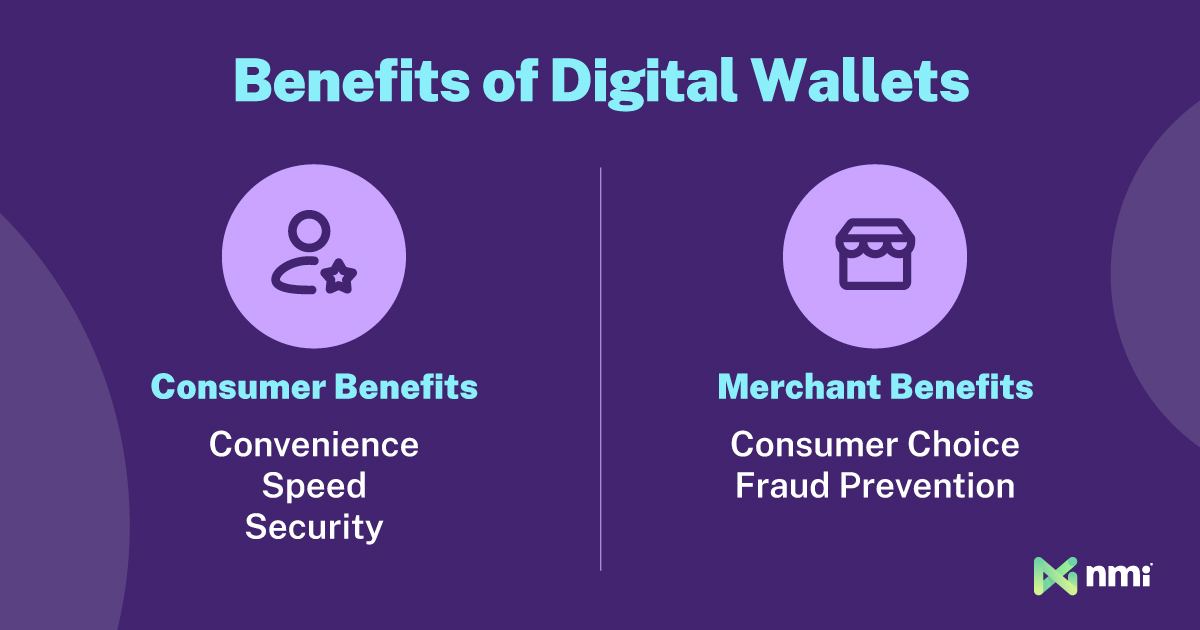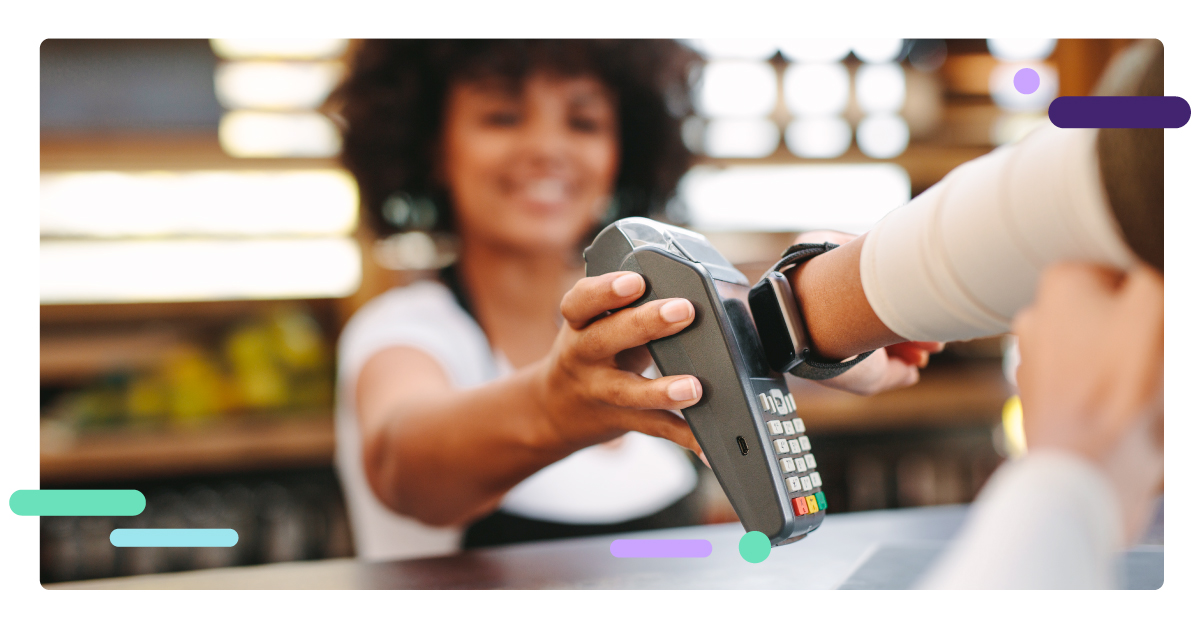Digital wallets are redefining how consumers pay and how merchants accept payments. Today, 53% of Americans use digital wallets more often than traditional payment methods, spending up to 31% more on restaurant and retail purchases. Most prefer apps like Apple Pay, Google Pay and Samsung Pay to physical cards. Outside the United States, the top two digital wallets globally — AliPay and WeChat Pay — have over a billion users combined, thanks mostly to their enormous user bases in China.
The growing popularity of digital wallets (especially among younger consumers) makes them an extremely important payment option for merchants and payment providers. But what are digital wallets, how do they work, and what benefits do they offer consumers and merchants?
What Are Digital Wallets?
Digital wallets are applications that store a consumer’s payment information on a computer or mobile device. They allow users to store virtual copies of their credit, debit and even some loyalty cards.
Some types of digital wallet apps even offer native in-wallet currency storage without the need to enter a card at all. Examples include PayPal and Apple Cash, which allow users to send and receive money within the app. Users can pay with their stored currency without connecting to a bank account or card.
These solutions allow consumers to make electronic transactions without carrying a physical wallet. Today, digital wallets are standard on most mobile phones, and anyone with a Google or Apple account also has one on their computer.
How Do Digital Wallet Payments Work?
Generally, a digital wallet payment is a credit or debit card payment. The customer is just changing how the card data interacts with the payment gateway.
In-Store: In a store, digital wallet payments work like contactless cards; they use radio frequency identification (RFID) or near-field communication (NFC) signals. However, instead of the signals coming from a physical card interacting with the payment terminal, the NFC technology is in the user’s phone. The same payment data is transmitted, and the rest of the payments journey unfolds as if it were a normal card payment.
The biggest difference is that in-store, users are prompted to enter a PIN or authorization code (or scan their fingerprint or face) to unlock the payment as a security measure.
Online: eCommerce payments use payment data stored in digital wallets to fill in the checkout system fields automatically or bypass them altogether. When the user starts to checkout, the digital wallet detects the activity and provides them with a payment prompt. Depending on the merchant, the payment can happen with a single click. On laptops and desktops, this process typically doesn’t require biometric verification. However, MacBooks with Touch ID fingerprint scanners do offer biometric security as an option.
How Are Digital Wallets Integrated With Merchant Checkout Systems?
It is exceptionally easy for merchants to integrate digital wallets into their payment solutions. In fact, this feature may already be available without a merchant’s knowledge.
Every EMV-compliant contactless payment terminal can accept digital wallets. That means merchants with up-to-date payment pads can start accepting these payments immediately. If their pad doesn’t accept tap payments, they just need to contact their payment provider to get a new one.
Online digital wallet payments are enabled in the back end of the merchant’s ecommerce system. For many new ecommerce platforms, this is automatic and requires no action. For older ones, it’s generally as simple as toggling on the option, although there may be extra steps to accept specific wallets like AmazonPay.
What Are the Benefits of Digital Wallets?
Digital wallets are growing in popularity because of the many benefits they offer consumers and merchants. On both sides of a transaction, they provide the core features shaping how people pay: convenience, speed, choice and security.

What Benefits Do Digital Wallets Offer Consumers?
For consumers, speed, convenience and security are top drivers of adoption.
Convenience: A digital wallet can hold an unlimited number of cards. The average American now has 3.84 credit cards, not including their numerous debit and loyalty cards. The ability to tap or click to pay is convenient for shoppers since they don’t have to carry a bulky wallet.
Speed: In-store, these payments are as fast as tapping a contactless credit or debit card. Online, paying is often a one-click process that eliminates the need to enter payment details. That makes this solution one of the fastest payment methods available.
Security: Most in-store digital wallet payments with a smartphone require multi-factor authentication, such as biometric verification, which adds an extra layer of security. This makes it much harder for bad actors to use stored payment information on stolen phones.
What Benefits Do Digital Wallets Offer Merchants?
For merchants, accepting digital wallets reduces costly payments fraud and ensures consumers have additional ways to pay.
Consumer Choice: Today’s consumers want to choose how and when they interact with businesses. If their needs aren’t met, they’ll go somewhere else. Research from Gartner shows that a majority of millennial and Gen Z consumers would stop buying from a company if they couldn’t access the self-service options they wanted. For merchants, digital wallets are an effective and easily accessible way to stay competitive by providing consumers with a broader set of payment choices.
Fraud Prevention: Although not foolproof, the additional security this method offers means merchants won’t have to worry as much about taking payments from stolen cards or receiving illegitimate charge disputes. Ultimately, the more digital wallet transactions a merchant takes, the lower their fraud risk gets.
The Future of Digital Wallets
By 2026, 5.2 billion people are expected to adopt digital wallet payments. As younger shoppers gain more spending power, digital wallets will become critical for merchants to meet consumer demands. This is especially true as 91% of consumers between 18 and 26 already use digital wallets as their primary payment method.
NMI’s suite of embedded payment solutions makes it easy to offer your merchants the cutting-edge payment options they need to thrive. Contact a member of our team for more information, or click here for more digital wallet insights from our Chief Marketing Officer, Peter Galvin.
To learn more, reach out to a member of our team today.




